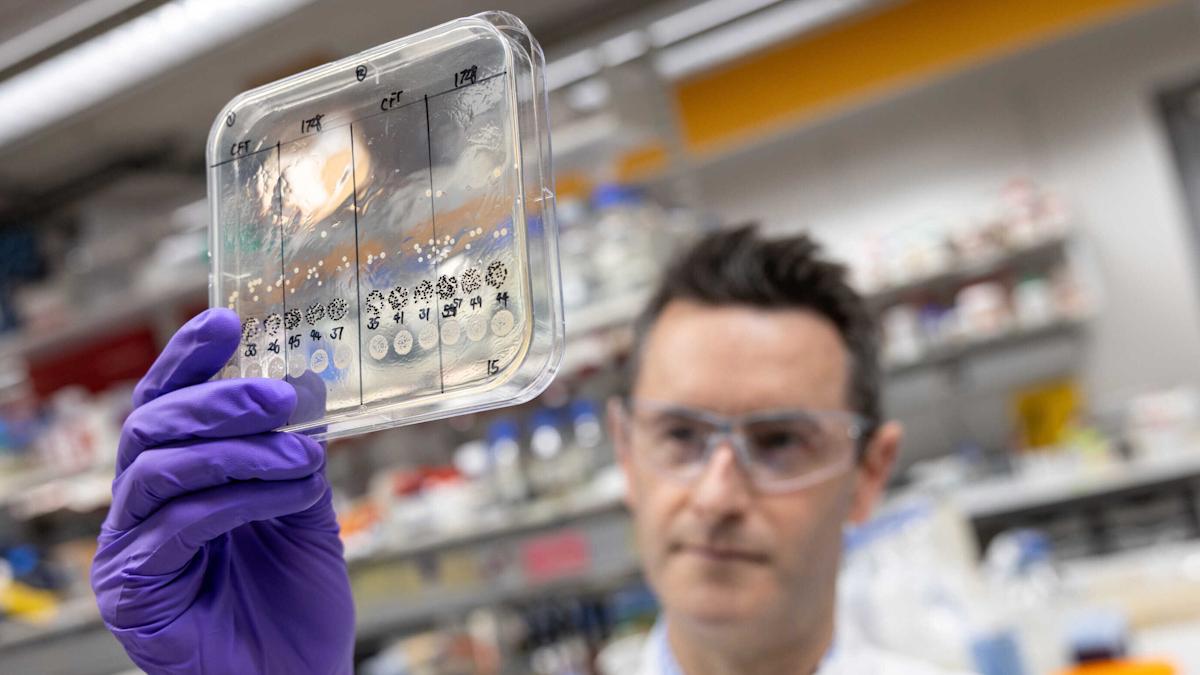A new approach to drug design: Restoring the effectiveness of antibiotics

None of us are unaware of the very real danger of ‘superbugs’ – only last month, the hospitalisation of Madonna highlighted the risks posed by bacterial infections and their potentially severe consequences for patients. And, while findings in a United National Environment Programme (UNEP) report – published back in February – showed that pollution by the pharmaceutical and healthcare sectors, as well as agriculture, is driving the antimicrobial resistance (AMR) dilemma, there is now perhaps another option that could prevent a projected 10 million lives being lost to AMR by 2050.
A team led by members of the Department of Chemistry at King’s College London, in collaboration with scientists from the University of Oklahoma and the Georgia Institute of Technology, have reportedly discovered a new molecular method that could enable more effective and cheaper prevention of bacteria becoming resistant to antibiotics. To find out more, pharmaphorum spoke with Dr Eamonn Reading, associate professor and UK Research and Innovation (UKRI) Future Leaders Fellow at the University of Southampton. Previously, Dr Reading had been a UKRI Fellow and senior lecturer in chemistry at King’s College London.
One of the biggest threats to global health, food security, and development
In 2019 alone, 1.27 million deaths were attributed to bacterial AMR worldwide – more than HIV and malaria combined – and it has been labelled one of the greatest threats to global public health, together with food security and development, by the World Health Organization (WHO).
In a paper published recently in the journal Nature Communications, Dr Reading and chemist Benjamin Russell Lewis (Dr Reading’s PhD student) presented a novel approach by which the efficacy of current antibiotics might be restored, rather than developing new antibiotics: by using a tool called an efflux pump inhibitor, which synergises with antibiotics to combat bacterial resistance.
Bacteria can become antibiotic-resistant by drawing on their efflux pumps – proteins which recognise antimicrobial agents and eject them before reaching their target. This ejection ability means the bacteria can reduce the concentration of antibiotics that reach the inside of the cell, increasing the likelihood of treatment failure. The key, the chemists posit, is to target the efflux pump response and prevent this mechanism.
The analogy of the fire extinguisher
A question of repurposing, then, rather than novel drug development, the efflux pump inhibitor method could reduce the time investment and resources necessary for new antibiotic production. So it is that the scientists hope that their research might provide the groundwork for how these cells and proteins interact at a molecular level, enabling pharmacologists to produce a new class of inhibitors and antibiotics treatments ahead of the next generation of superbugs.
“I always partly steal this analogy by a scientist called John Rex, who says that antibiotics are our medical fire extinguishers,” Dr Reading explained. “When an infection comes, it's like when a fire starts: you don't really have time to call the fire department or think of how best to deal with this. You need something which can tackle that immediately. And that's what we use antibiotics for, right? We get an infection – we need to start tackling this. Imagine if those fire extinguishers worked last time, they were all great, and then this time you try to use them and they don't seem to be working, the fire seems to be spreading, the infection seems to be getting worse.”
“That's what antimicrobial resistance essentially is,” he continued. “What we are really interested in is we could maybe replace every single fire extinguisher, but that would be quite costly. That would take a bit of time to work out what the right ones are. Maybe we have to restructure certain parts to get all that in - that's the analogy [and] that would be reinventing new antibiotics. Basically, you are resupplying new fire extinguishers to your hospital, to your place of work. [So,] what we were thinking is, what if we had a component which we could add to that fire extinguisher which didn't seem to be working, that made it effective again?”
“That means we wouldn't have to restructure the building,” he said. “We wouldn't have to get new fire extinguishers in. We wouldn't have to invent new ways to extinguish that infection. That's what we research. There're a few different ways to do it, but our particular one was to target efflux. When we throw antibiotics at bacteria, part of the reason, not the sole reason, but one of the key players for why they become resistant to those antibiotics, is they can make lots of these efflux pumps, which are these membrane proteins, which basically spit them back out at you. That prevents them from reaching the effective concentration required to kill the bacteria.”
Essentially, it’s a question of stopping them from doing that in order to ‘revive’ existing antibiotics, rather than create new ones, thereby “contributing to the grand effort of how we can tackle such a societal problem,” Dr Reading said.
The proverbial spanner in the works
However, blocking the pump, so to speak, has been a traditional method – one which doesn’t last. Therefore, instead, what Dr Reading and his team have done is thrown a proverbial spanner in the works.
“[Efflux pumps], these membrane proteins, they exist in the cell membranes which surround bacteria,” Dr Reading explained. “That's the first barrier of protection that any cell has. In this case, bacteria have two of those membranes, and this membrane protein complex traverses across both of them and essentially acts as a pump, or what you could maybe imagine it is it acts like a vacuum cleaner. When these antibiotics get put in along with other types of molecules, they get sucked back out. It does this in quite a dynamic way. As you can imagine, any pump needs movement, it needs moving parts to be able to take something from the inside and pump it out to the outside.”
“Traditionally, people have been trying to block up the pump,” he continued. “‘Let's just stuff something in there to stop it from being able to pump stuff.’ You might have seen when you do that though – well, hopefully, you've not done it to your vacuum cleaner – that works for a bit, but eventually, that gets sucked up into the bag, and you're then back to the start again. This is what they're finding, [that] very often they would invent some of these molecules, it would block the pump, but eventually they become substrates themselves, and they will be exported. [So,] there was a rethinking of how else we can tackle something which seems to be so effective at spitting things out.”
“The idea is, what if we just threw a spanner in the works instead?” Dr Reading said. “These things need motion. Even on the molecular level, they need quite a lot of motion to be able to export these molecules and to do it in such an efficient fashion. What we found is this molecule, which was just discovered by our collaborators, was working like the spanner. On a molecular level, it was going in, and it wasn't blocking the pump, it was binding to another area away from that recognition area and it was stopping this motion..”
“When you block the motion, it means that it can no longer go through the dynamic process it requires to recognise the molecule and spit it out,” he continued. “That is hopefully a new drug class, a new drug target to get away from some of these problems where, when we invent molecules, they block up the pipe for a little bit and eventually they get exported. It's broadening our approach to it. It's the first [step in] understanding a new way to target this class of molecules, which seem to be so nefarious on how they contribute to AMR and multi-drug resistance.”
Laying the foundations: From academia to the industry
However, this discovery is very much based in academia, and the researchers now hope that industry will take up the science and make it a clinical reality.
“As a community, as a bunch of scientists, trying to work on this problem at very early stages,” Dr Reading explained, “this is laying the foundations, the groundwork, the knowledge for us to be able to take these inhibitors, these efflux pump inhibitors, and see if we can make them a real class of molecules, which become effective in the clinic.”
“This actual molecule was found from a screen of cancer drugs […] by collaborators in America,” he continued. “They found this from a freely accessible drug screening collection. They found that it could effectively inhibit these key players, these efflux pumps, but they had no idea how or why. This is where we came in. We were like, ‘Why are these doing this?’ The reason we ask the question why is because, very often, when you have these beginnings of a drug class or a drug molecule, there are other problems.”
“It might work in a test tube, or it might work in mice, or it might work in a Petri dish, but when you go to clinic, it's very, very difficult to make a good prediction of whether that's going to be toxic, or whether it's going to be successful or expensive,” Dr Reading said. “To understand the mechanism of action – the actual molecular side of things – enables other people to take that knowledge and use that for future drug discovery, therapeutics, drug design. It's what we call a form-and-structure-function relationship, how we can understand what the molecule is doing versus the biology. That's what we've done in our group in this instance.”
Opening a doorway to further research
The paper has been published open access to facilitate easier mobilisation of transfer from academia to clinical development.
“What this publication sets out is we've discovered that it acts as a molecular wedge, and we've discovered where it targets, we've discovered how it does that,” Dr Reading summarised. “We've discovered why targeting that is a potentially successful way to go in the next few years, in the next five years, a decade – because it could get away from some of these other issues. There are likely to be other issues and we always have to caveat that. Like I said, to take a drug all the way to the end costs hundreds of millions of pounds to do. We get funded by the taxpayer, so we don't have hundreds of millions of pounds in our lap.”
“What we're doing is we're laying the groundwork, so when it really gets to the point where there needs to be heavy focus and investment, billions of pounds put across to do that, we expedite how successful that's going to be, we expedite repurposing what we already have, inventing things which are able to bring in the knowledge base, the groundwork of how these things work in a molecular level, how they could maybe potentially translate,” he continued.
“We’re also developing chemical technology to investigate why and how AMR is working, how drugs work,” Dr Reading added. “What was really great about this work is we didn't just find the first ever mechanism of action for this type of molecule which could be potentially important for the things we just discussed. It’s [that] we've measured that movement, that dynamism I spoke about using the chemical technologies mainly based around mass spectrometry to be able to unveil, to decipher, to uncover how the dynamics of these proteins lead to how they function. Then, it turns out that when we target those dynamics, that movement, we can stop that function and it joins together.”
Seeing the old in a new light
As technology continues to accelerate and alter a multitude of working methods, new techniques – as evidenced in this study – can incorporate that advancement in order to investigate what already exists in a new and more effective way.
“One of the big problems with AMR is bacteria don't just float around most of their lives: they form coatings, they form biofilms,” Dr Reading explained. “This makes them much harder to get rid of because they actually have a physical protective barrier, as well as a molecular level, a biochemical level arsenal of things to protect themselves. If we can invent new ways to measure, new ways to identify, new ways to understand how these systems are leading to AMR and how we can drug them and why drugs work, how drugs work, how we can come up with new ones – that's a big focus of our laboratory, as well.”
“Bacterial multi-drug resistance continues to spread at alarming rates, threatening human health globally. If there ever is going to be a quick solution to dealing with something like a pandemic, employing efflux pump inhibitors will help us re-tool the existing treatments we already have,” he concluded.













